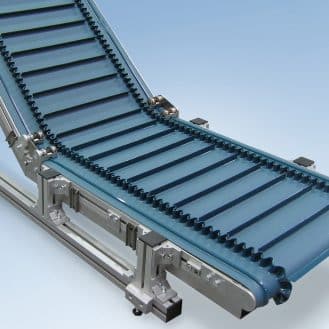The conveyor is a fundamental element in material handling. Automating handling reduces cost and speeds up production rates. Conveyors are available in many models and configurations, this guide focuses on the most common ones.

The conveyor is a fundamental element in material handling. Automating handling reduces cost and speeds up production rates. Conveyors are available in many models and configurations, this guide focuses on the most common ones.
In order to choose the right machine for your installation, you will need to consider several criteria.
The first decisive factor you will need to consider is the load capacity. Next, it is essential to think about the conveying route to be set up. The type of products to be conveyed is also an important aspect. You will need to take into account their weight, volume and condition (bulk or packaged products). You will also need to think about the technology that will be suitable for your installation. Lastly, the configuration of the space in which the conveyor will be installed is an important point not to overlook. Is it possible to install the conveyor system on the ground? If the answer is no, you can choose an overhead conveyor system.
Main selection criteria:
A belt conveyor can move light loads.
It is characterized by the type of conveyor belt used (material, texture, thickness, width) and by the position of the motor unit (on the end, central, left, right, underneath, etc.). Some conveyor belts are designed to withstand very high temperatures. Rigid acetal belts can carry heavier loads.
Unlike roller conveyors, belt conveyors can transport both bulk and packaged products.
There are several types of belt conveyors:
There are also hinged belt conveyors, metal belt conveyors etc.
A roller conveyor uses handling rollers to transport packaged products. Its main advantage is that it is possible to adjust the height and inclination. It is fairly low maintenance. It is an ergonomic and washable system suitable for products big enough to be in constant contact with three handling rollers.
If you want to invest in a roller conveyor, it is important to:
There are several types of roller conveyors:
This type of conveyor allows you to move heavy loads like pallets that cannot be transported on a roller conveyor. In order to transport smaller or less rigid products, it is necessary to add chains to the conveyor. There are conveyors with two, three, four or even five or more chains.
Chain conveyors are characterized by the number and material of the chains used (steel, stainless steel, plastic), as well as the robustness of their load-bearing frame, which is often mechanically welded (more suitable for heavy loads).
Unlike belt conveyors and roller conveyors, chain conveyors can be overhead: these are described in the next paragraph.
An overhead conveyor is a rail system installed up high, allowing loads to be moved from point A to point B. Overhead conveyors are made up of trolleys mounted on rails. They are used in many sectors such as painting (moving products through the paint booth), metallurgy, surface treatment, the automotive industry, etc.
They offer many advantages:



I didn’t know that there was so much tech involved in belts. My office needs some maintenance work done on equipment. I’ll have to hire someone with good online reviews to help out.